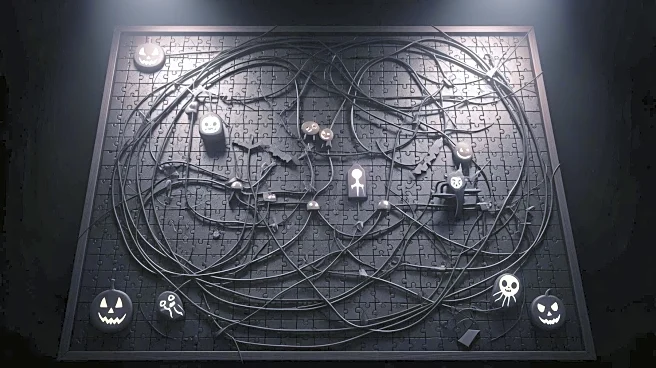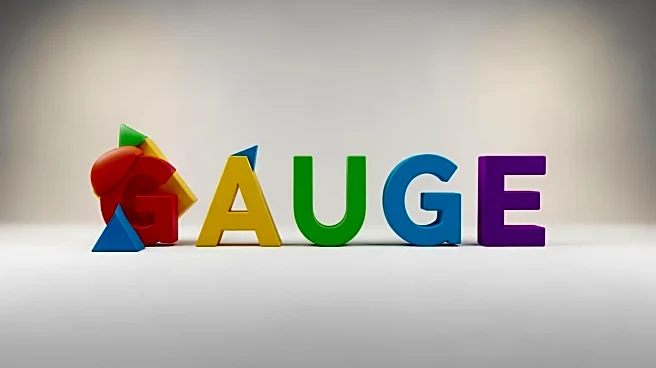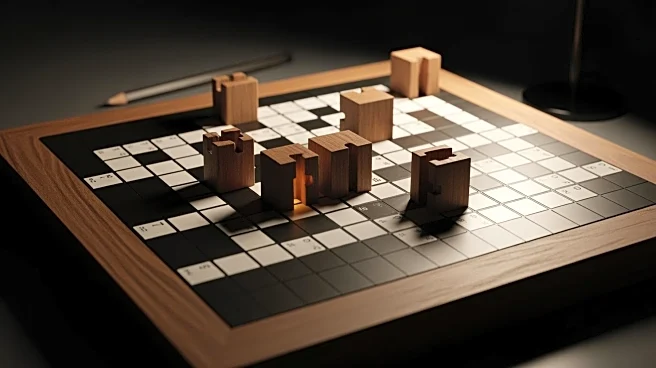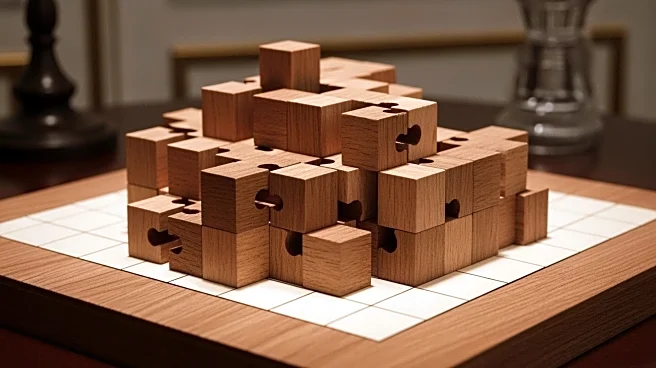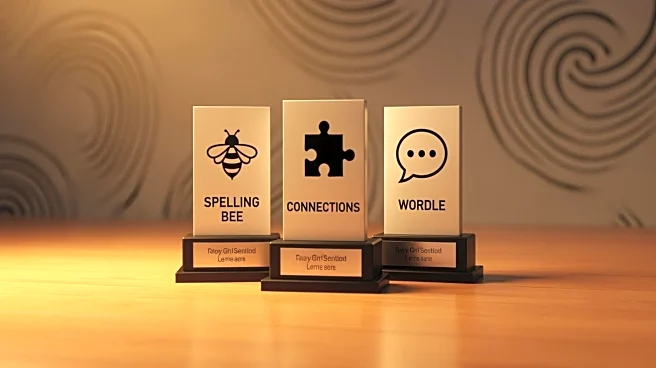What's Happening?
CNET has released hints and answers for the New York Times Strands puzzle for October 25, 2025. The puzzle features a Halloween theme, focusing on creatures that undergo transformations. The main challenge
is to find all the theme words, including the spangram 'SHAPESHIFTERS,' which stretches across the puzzle. The puzzle includes well-known creatures such as 'VAMPIRE,' 'WEREWOLF,' 'CHANGELING,' and 'SKINWALKER.' CNET provides additional clues and strategies to help players solve the puzzle, emphasizing the importance of finding words of four letters or more to unlock theme words.
Why It's Important?
The NYT Strands puzzle is part of a broader trend of engaging word games that challenge players' vocabulary and problem-solving skills. These puzzles not only provide entertainment but also stimulate cognitive functions, making them popular among a wide audience. The Halloween theme adds a seasonal twist, attracting players interested in festive activities. By offering hints and solutions, CNET enhances the puzzle-solving experience, potentially increasing engagement and satisfaction among players. This support can lead to a more dedicated user base for both the New York Times puzzles and CNET's gaming guides.
What's Next?
As the popularity of word puzzles continues to grow, it is likely that more themed puzzles will be introduced, especially around holidays and special events. CNET and similar platforms may expand their coverage and support for these puzzles, offering more comprehensive guides and interactive features. This could include community forums for puzzle enthusiasts to share strategies and solutions. Additionally, the success of themed puzzles may encourage the New York Times and other publishers to innovate further, possibly integrating digital elements or interactive components to enhance the user experience.
Beyond the Headlines
The rise of word puzzles like Strands reflects a broader cultural appreciation for intellectual challenges and mental exercises. These games serve as a counterbalance to the fast-paced, often superficial content prevalent in digital media. They encourage deep thinking and patience, qualities that are increasingly valued in a world dominated by quick consumption of information. Furthermore, the communal aspect of solving puzzles, whether through shared hints or collaborative problem-solving, fosters a sense of community and shared achievement among players.
